QR Codes and Medicine Collide
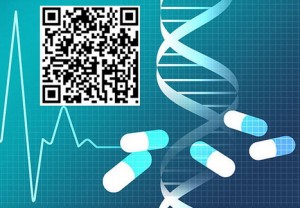 A new method for producing medicine has been developed by researchers from the University of Copenhagen in Denmark and Abo Akademi University in Finland. They can produce a white edible material, on which they can then print a QR code consisting of a medical drug. This could be a solution and a possible replacement to the current method of mass production of medicine. Currently someone with a given illness will get the same product with the equal amount of an active compound as another patient with a less severe illness.
A new method for producing medicine has been developed by researchers from the University of Copenhagen in Denmark and Abo Akademi University in Finland. They can produce a white edible material, on which they can then print a QR code consisting of a medical drug. This could be a solution and a possible replacement to the current method of mass production of medicine. Currently someone with a given illness will get the same product with the equal amount of an active compound as another patient with a less severe illness.
“This technology is promising, because the medical drug can be dosed exactly the way you want it. This gives [us] an opportunity to tailor the medication according to the patient getting it,” said Natalja Genina, an Assistant Professor at the University of Copenhagen.
The shape of a QR code will also enable the storage of data on the medicine itself. According to Genina all that’s required is a quick scan and the information of the given medicine would come up, this could reduce the cases of wrong or fake medication.
“If we are successful with applying this production method to relatively simple printers, then it can enable the innovative production of personalized medicine and the rethinking of the whole supply chain,” said professor Jukka Rantanen from the University of Copenhagen’s Department of Pharmacy.
Currently, researchers are working to refine the methods for this medical production.
QR Codes to Change the Retail Landscape
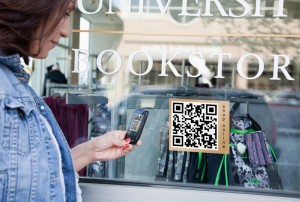 The use of QR codes in the retail industry is expected to increase in the coming years. According to Juniper Research, QR coupons redeemed via a mobile device is expected to reach 5.3 billion by the year 2022. In comparison QR coupons used in 2017 reached about 1.3 billion. That’s an expected 81 percent increase in about 5 years. Target is already on board with QR codes recently announcing a QR code-based payment system that will allow consumers to scan offers directly to their device.
The use of QR codes in the retail industry is expected to increase in the coming years. According to Juniper Research, QR coupons redeemed via a mobile device is expected to reach 5.3 billion by the year 2022. In comparison QR coupons used in 2017 reached about 1.3 billion. That’s an expected 81 percent increase in about 5 years. Target is already on board with QR codes recently announcing a QR code-based payment system that will allow consumers to scan offers directly to their device.
The retail industry stands to gain from the usage of QR codes and there are many ways to incorporate them in the shopping experience.
- QR Coupons
As discussed above QR Coupons are just the start but are still an integral part in incorporating QR codes. Consumers, as one myself, are just trying to find a deal that’ll be easy on the wallet. QR coupons are a great way for consumers to get a deal and an easy way to start for any retail business. There are many ways a business can get started with QR coupons; printing physical QR coupons is one possibility. To do so a barcode printer and barcode software would be needed in order to create and print coupons to hand out to the consumers. Another would be to create QR codes for mobile devices via an email promotion. One thing is certain, a barcode scanner capable of scanning QR codes will be needed to scan any coupons consumers bring in.
- Window Shopping
Using QR codes for window shopping should be taken both literally and figuratively. What I mean by that is, literally putting QR codes on window display products. This would benefit retail stores located in malls as consumers walk by they can scan a QR code associated with a product. Figuratively consumers tend to do a lot of “window shopping” in stores by just looking around. Consumers want as much information as possible about a product before purchasing. Using QR codes in the window shopping fashion could give consumers access to product information with videos and reviews.
- The Shopping Experience
To piggy back off the figurative “window shopping”, QR codes could revolutionize the in-store experience for the consumer. Placing QR codes on the product packaging will allow consumers to learn valuable information about the product. QR codes could contain videos explaining the product to the consumer or it could contain a link leading the consumer to customer reviews. Another possibility would be sampling certain products like music, a consumer could scan the QR code of a CD and listen to track samples. Lastly, consumers could be given the ability to purchase the product directly from the QR code and have the product shipped anywhere.
- Upcoming Sales and New Products
QR codes could help inform consumers of upcoming sales, promotions, or an interactive view of new products arriving to the store in the near future.
- Customer Information
The retail industry can use QR codes to encourage consumers to sign up for their newsletter. Perhaps a sign up feature could be included in the QR code encouraging consumers to sign up with their email address and receive special deals in the future.
Most Consumers now a days have a mobile device on their person. Retailers can use that fact to help improve the consumer experience while at the same time change the retail landscape.
For any questions or a quote on any of your QR code needs contact us at Barcodes, Inc.
A Textbook Way to Use QR Codes
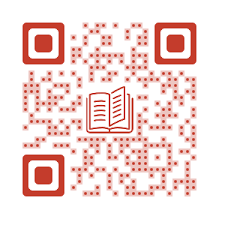 Most of today’s youth have access to smartphones or tablets and through those pieces of technology a whole world of media such as videos, infographics, podcasts, etc. are at their fingertips. Bubbles technology brings a new way to incorporate the use of digital media content into traditional learning modes. Bubbles containing QR codes are spread throughout textbooks; thus students and teachers will have access to short, interactive modules. This could help a student get a much deeper understanding of the course material through audio clippings and visual snippets that complements the curriculum.
Most of today’s youth have access to smartphones or tablets and through those pieces of technology a whole world of media such as videos, infographics, podcasts, etc. are at their fingertips. Bubbles technology brings a new way to incorporate the use of digital media content into traditional learning modes. Bubbles containing QR codes are spread throughout textbooks; thus students and teachers will have access to short, interactive modules. This could help a student get a much deeper understanding of the course material through audio clippings and visual snippets that complements the curriculum.
All the student or teacher has to do is simply scan the QR code via a tablet or smartphone with a free QR reader app, or click the link if it’s an eBook, to unlock a 60 to 90 second interactive lesson. For example a math textbook trying to explain a complex equation, the text can only do so much. A QR code associated with this complex equation can be scanned prompting an interactive lesson to open and explain the equation in much more detail using animation, audio, and graphics.
It is believed that the future of education lies in what they are calling a “flipped classroom”. A flipped classroom is the idea that students would study the content at home using books and interactive technology. Then the following day in class students would complete practice exercises with the ability to discuss last nights learning material with other students and teachers. QR codes have been used in many areas of the world and they could be utilized to help teach the next generation.
To read more about QR codes in textbooks, read “QR Code Technology Brings Textbooks To Life“
How the Barcode Simplified Life
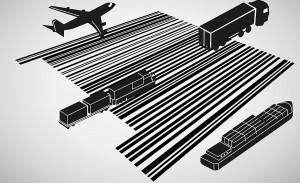 In 1974 a pack of gum was purchased using the first ever barcode. Since then the use of barcodes has skyrocketed and has taken many forms of symbologies. The symbology of a barcode includes the encoding of the message in the bars and spaces, including any start and stop markers plus the size of the quiet zone (a blemish free space around the code to help readers locate it) that is required to be before and after the barcode. There are a few different types of barcode symbologies from the linear Code 128 and Code 39 to the newer 2D QR Codes, Data Matrix, and Micro PDF.
In 1974 a pack of gum was purchased using the first ever barcode. Since then the use of barcodes has skyrocketed and has taken many forms of symbologies. The symbology of a barcode includes the encoding of the message in the bars and spaces, including any start and stop markers plus the size of the quiet zone (a blemish free space around the code to help readers locate it) that is required to be before and after the barcode. There are a few different types of barcode symbologies from the linear Code 128 and Code 39 to the newer 2D QR Codes, Data Matrix, and Micro PDF.
What has the barcode done for this world? It’s made life easier. Its helped the retail industry keep check of the number of products they have in stock and a way to see what products sell at higher volumes. More importantly its helped consumers get in and out of stores quicker by dramatically improving the check out line. Imagine a world in which you would have to wait until the cashier looked up every single item you wanted to purchase? In that scenario the checkout lines would be ridiculous, luckily the barcode is here to save us from that nightmare.
Retail is just one of the many industries that barcodes has helped improve; another is the healthcare industry which has greatly benefited from the barcode. In the healthcare industry you’ll find barcodes on patient samples and the wristbands patients wear. There’s systems in place that would automatically generate a new barcode every time a patient has their blood drawn, making it so that the blood sample can be tracked from the hospital floor to the laboratory for testing. Human error of course is still possible, but with the use of barcodes those errors have been greatly minimized.
To learn more about barcodes visit our FAQ or read more about the rise and use of “The Ubiquitous Barcode”
For any questions or a quote on barcode software or barcode labels please contact us at Barcodes, Inc.
Open Source Beer Recipe in a QR Code
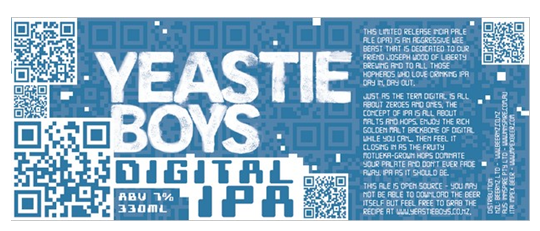 The applications you can put QR Codes to use may range from coupons to advertising campaigns but this has got to be one of the more unique applications.
The applications you can put QR Codes to use may range from coupons to advertising campaigns but this has got to be one of the more unique applications.
The New Zealand brewing company Yeastie Boys incorporate several QR Codes on the labeling of their Digital IPA. These codes lead customers to various web pages including Facebook and Twitter accounts but one of the QR Codes lead to the full recipe of the beer, which essentially makes Digital IPA the world’s first open source beer!
If you are looking to incorporate 2D barcodes in your business and need help getting started, contact us at Barcodes Inc.
The Next Generation Warehouse : Long Range Scanning and the Emergence of 2D Barcodes
Introduction
Today’s warehouses are rapidly evolving as they seek to keep up with a variety of new requirements and advancements in technology. Processes traditionally using 1-dimensional bar codes are becoming more accurate, more efficient, and more robust through the transition to 2D symbologies. Offering superior data storage capability yet compact in size, these 2D symbols are ideal for cradle-to-grave tracking of products and serialization. As imaging technology progresses, businesses are poised to take advantage of the benefits of implementing 2D while continuing to accommodate the long range scanning requirements typical in the warehouse environment.
Driving this transition is the growing need to track individual parts from assembly to shipment and beyond for information and traceability purposes, largely imposed by company-specific or legislative requirements. A 2D bar code can accommodate significantly more information than its 1d counterpart, and in a fraction of the space, making such traceability possible.
Historically, laser scanners have been the preferred technology in warehousing because of their speed, accuracy, and ability to read at long range. however, as 2D bar codes become more common and imaging technology matures, manufacturers are now discovering what imagers have to offer in terms of flexibility, traceability, and legislative standards compliance.
Shadow QR Code Campaign Increases Sales 25%
Many retailers experience a slow part of the day which can be a difficult challenge to solve. Sometimes the best answer is engaging your customers in new and creative ways.
South Korea’s largest retailer, E-mart, was seeing a a large dip in daily business from 12pm to 1pm and came up with a novel way to get customers into stores. They created a shadow QR code that was only scannable between 12pm and 1pm when the sun was in a position to cast the correct shape shadow. When people would see these shadow QR codes outdoors they could use their smartphone to read them. Once scanned, they are lead to a ‘Sunny Sale’ homepage with special offers, coupons and a download for the Emart ecommerce app. This simple yet clever campaign helped increase Emart’s sale by 25% during their once difficult lunchtime slump. The campaign was conceived and managed by Cheil Worldwide who were also responsible for the virtual grocery store in Hangangjin subway station in Seoul.
Imaging Moves Into the Mainstream
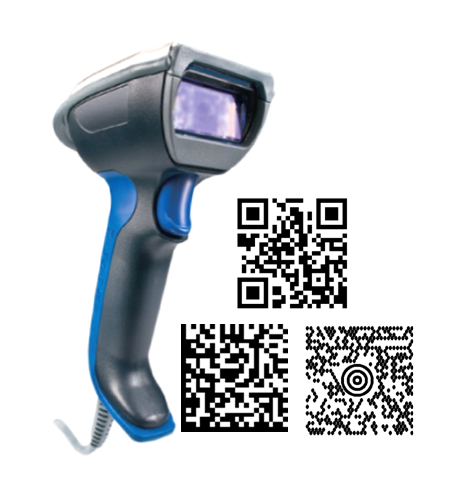 Why 2D Imagers are Surpassing Laser Scanners for Bar Code Applications
Why 2D Imagers are Surpassing Laser Scanners for Bar Code Applications
Misperceptions about 2D imagers are changing fast, which is why 2D imagers are the fastest-growing category of bar code readers. Only a few years ago 2D imagers were (wrongly) considered a niche technology mostly used for reading 2D bar codes. Now they are becoming the technology of choice for most bar code applications, and lasers are on the way to becoming a niche technology. The reasons: 2D imagers are as fast or faster than laser scanners, can read all the same bar codes as lasers plus 2D symbols that lasers can’t, and can do much more.
Not only can 2D imagers read more bar codes than lasers – including QR Codes, Data Matrix and other popular 2D symbols – they can also do more than read bar codes. Imagers can take digital pictures, shoot video, capture customer signatures, scan documents and even process the scanned data. These capabilities, which are outlined in the graphic below, enable new business processes that are not possible with older-generation technology. In an era where workers are tasked with doing more – collecting more information, providing more documentation, being more productive, etc. – 2D imagers provide more flexibility.
2D imaging technology gives businesses the two things they need most from their bar code readers: outstanding performance in today’s applications, and investment protection to meet future needs. This white paper is a guide to 2D bar code imaging technology, including an overview of capabilities and how 2D imagers perform in traditional applications, the beneficial new business processes that imaging enables, and the advantages 2D imaging provides compared to laser scanners.
Continue reading »
Advertisers Only A Snapshot Away With ‘Tag’ Technology
![qrtag[1]](https://www.barcodesinc.com/news/wp-content/uploads/2009/04/qrtag1.jpg) A popular technology overseas that links mobile users to the ever-evolving world of advertising is gearing up for its debut here in the U.S. NY1’s Adam Balkin filed the following report.
A popular technology overseas that links mobile users to the ever-evolving world of advertising is gearing up for its debut here in the U.S. NY1’s Adam Balkin filed the following report.
It’s a use for the mobile phone that’s taken off in Japan, and now Microsoft is hoping to bring the same excitement to the United States. In Japan, they’re black and white and called “quick response” or QR Codes. Here they’re color and called Tags. Tags are kinda like high-tech barcodes that you take a picture of with your cell phone’s camera. The image then immediately takes you to wherever the creator of that tag wants to take you online.
“Using the camera on your phone, you can read a Tag and be taken to a website for information, you can get contact information, you can be provided text information,” said Kevin Kerr, Microsoft. “So imagine reading a Tag at a movie theater and being able to play the trailer for that particular movie, or reading a Tag for a particular product at a store or a sign at a bus stop to understand when the next bus in coming for that particular bus stop. So these Tags can exist in magazines, you can put them in posters, on websites, digital signage.”
While these types of technologies have been tried in the past with little success, those who own a G1 Google phone have recently warmed to the idea thanks to an application that lets you snap shots of barcodes on products and instantly comparison shop online.
In fact, those QR Codes started a test run a year ago in San Francisco. So why do Tag developers think their concept is the one that will finally take hold? And the other obvious question — why not just link to barcodes that are already all over the place?
“The QR Code and those other things are black and white. They were designed for industrial usage. These are colors, so we have the ability to do logos and other things that are much more interesting,” said Kerr. “If you want to target demographics with this new type of mobile technology you have to do something interesting as well as functional.”
Tags work on just about any phone with a camera, including iPhones. Go to www.gettag.mobi for the free download to make it work.
Right now, Tags are in beta, or development, which means anyone can go to www.tag.microsoft.com and create a Tag for free. What that Tag points to can be updated every day, or even every hour if you want. Microsoft says if, down the line, it does start charging to create tags, any created during the beta period will be grandfathered in and remain free forever.





